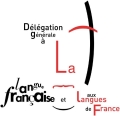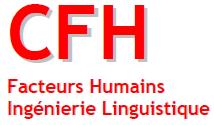Workshops
Workshop 1: From
theme to term (cfp - in French)
Workshop 2: Semantic
relations (CFP - in French)
Invited speakers
Diana
Maynard
(University of Sheffield, UK)
Keynote abstract
Carlos
Subirats
(Universitat Autonoma de Barcelona - Spain and Berkeley- USA)
Keynote abstract
 Important
dates Important
dates
Demonstration
November 9, 2009
Registration
Special rate before October 27, 2009
Conference
November 18-19, 2009
Workshops
November 20, 2009
Organized
by:


Sponsored by:







Supported
by:


|
TIA 2009 Program

Pictures of the Conference (visit, gala diner, posters and talks)
On-line proceedings
- TIA Conference: November 18 to 19, 2009
- Gala diner: November 18, 2009
- Workshops: November 20, 2009
- Keynotes
-
32 papers were submitted to the program committee, proceeding from diverse places such as Belgium, Canada, China, Croatia, France, Italy, Portugal, Spain, the United Kingdom, and the United States. The PC selected 24 articles (selection rate: 78%):
Keynotes
- Carlos
Subirats
(Universitat Autonoma de Barcelona - Spain and Berkeley- USA):
Spanish FrameNet. An on-line lexical resource
and its application to NLP
Spanish FrameNet (SFN *) is a research project which is developed at
the
Autonomous University of Barcelona (Spain) and the International Computer
Science Institute (Berkeley, CA) in cooperation with the FrameNet
Project.
SFN is creating an online lexical resource for Spanish, based on frame
semantics (Fillmore 1982, 1985) and supported by corpus evidence. The
basic aim of the project is to develop a semantically and syntactically
annotated lexical resource with broad lexical coverage in Spanish which
can be used as a training corpus for applications aimed at automatic
semantic role labeling (Erk and Padó 2006). In its present
state, SFN contains more than 1,000 lexical items, basically, verbs,
nouns, and adjectives, representative of a wide range of semantic
domains. The aim is to document the range of semantic and syntactic
combinatory possibilities (valences) of each word in each of its senses
through semiautomatic annotated example sentences and automatic capture
and organization of the annotation results. The results of this project
can be browsed on the web (http://gemini.uab.es/SFN)
using several web report generators which support a variety of queries
about the general description of the semantic frames and their frame
elements. The semantically and syntactically annotated corpus sentences
display the syntactic realizations of frame elements as well as their
respective phrase types and grammatical functions.
* SFN is sponsored by the Department of Science and Innovationof
Spain (FFI2008-0875) and the Fundación Comillas .
- Diana
Maynard (University of Sheffield, UK)
GATE: Bridging the Gap between Terminology and
Linguistics
One of the current problems many terminologists face is the lack of
suitable tools to process their data. In particular, since needs differ
widely, general and robust tools are required that can be adapted to
different language processing tasks and even languages.
GATE is an open source architecture for language engineering,
developed by the University of Sheffield and used worldwide by
thousands of scientists, companies, teachers and students. One of its
key outcomes is that over a decade of collecting reusable code and
building a community has led to a mature ecosystem for solving
language processing problems quickly, efficiently and cheaply. It
contains a specialist Integrated Development Environment for language
engineering R&D, enabling users to visualise, create and edit
text,
annotations, ontologies and parse trees, to create new linguistic
processing resources and to construct applications from pre-defined
components, and to perform evaluation and benchmarking on the results.
GATE contains a set of ready-made linguistic processing resources such
as tokenisers, POS taggers, parsers and so on which are theory-neutral
and therefore widely applicable to a number of tasks in various
languages.
It has been used not only in many research projects but also in
industrial settings by commercial users such as AstraZeneca, the Press
Association, Garlik, Fizzback, Innovantage, Roche and Intelius,
amongst many others.
GATE and its components are a key tool in today's world of information
and data overload, enabling users to perform tasks such as document
management, business intelligence, information retrieval, question
answering, and knowledge indexing, modelling and conceptualisation.
|
![]()
 Important
dates
Important
dates